Flea Control and Prevention
ENTFACT-602: Flea Control and Prevention | Download PDF | En Español
by Michael F. Potter, Extension Entomologist
University of Kentucky College of Agriculture
Ridding your home of fleas can be a daunting and costly endeavor. Unlike most household pests, fleas bite dogs and cats as well as people. The bites can cause intense itching and irritation, and a hypersensitive animal will often require veterinary assistance. Fleas can also transmit tapeworms and bacterial infections. The pests are highly prolific -- the biting adult stage might be living on the pet, in addition to hundreds or thousands of eggs, larvae, and pupae elsewhere in the home or yard. If early signs of fleas are ignored, infestations can quickly spiral out of control.
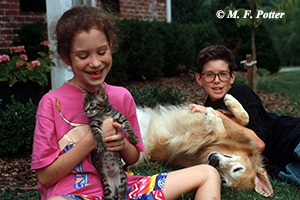
Fig. 1: Fleas infest dogs and cats, and may also bite people.
Flea eradication requires treatment of pets, and oftentimes the premises. Your level of success will depend on how these treatments are performed. This publication will help you eliminate your flea problem and reduce the risk of future infestation.
Facts about Fleas
Fleas are common external parasites of both dogs and cats. The adults are ravenous blood-feeders, consuming up to 15 times their body weight in blood per day. Pets initially become infested when adult fleas occurring indoors or outdoors jump on the animal. With the ability to jump vertically up to about 6 inches, the adults can easily hitch a ride onto a passing dog or cat, or even the shoes and pant legs of a human. Pets acquire fleas from kennels, groomers, etc., or from stray dogs, cats or wildlife (especially opossums and raccoons) wandering through the yard. Contrary to popular belief, fleas seldom jump directly from one pet to another.
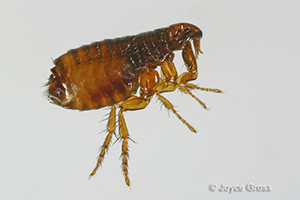
Fig. 2: Close up of a cat flea (Ctenocephalides felis), the most common flea infesting both dogs and cats.
Photo credit: Joyce Gross
Adult fleas spend most of their time on the dog or cat, not in the carpet. This is why treatment of the pet is an essential step in ridding a home of fleas. Within minutes of jumping onboard, fleas begin to feed. Digested blood expelled as feces appears as dark, pepper-like specs in the pet’s fur. Mating and subsequent egg laying occurs within 24 hours. All of the eggs (40-50 per day) are laid in the fur. However, the eggs soon fall off into carpeting, beneath the cushions of furniture, and wherever else the pet rests, sleeps, or spends time. When treating premises, thorough attention to these areas is crucial.
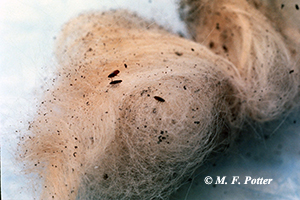
Fig. 3: Flea feces appear as dark, pepper-like specs on the fur of the animal.
After hatching, the eggs develop into tiny, worm-like larvae that remain hidden beneath carpet fibers, furniture cushions, and other protected areas. The larvae feed mainly on the feces (dried blood) expelled by the adults which accumulates, along with the eggs, in areas where pets tend to rest or spend time. Before becoming adult fleas, larvae transform into pupae within a silk-like cocoon surrounded by bits of debris. Pupae remain inside the cocoon for 1 to 4 weeks. However, it might take longer for them to emerge if conditions become unfavorable, for example when a flea-infested home becomes vacant. The cocoon is also impervious to insecticides—another reason some fleas may persist for an extended period, even after the pet and home are treated.
Treatment of Pets
The traditional approach for battling fleas typically involved concurrent treatment of both the pet and the premises. Revolutionary new products for eliminating fleas on pets have led to rethinking this long held approach.
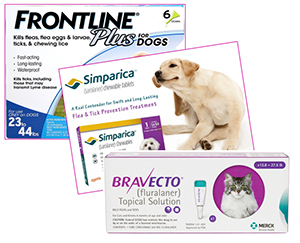
Fig. 4: Several effective products are available for preventing and eliminating fleas on pets.
Products for treating dogs and cats are available in the form of oral medications and topical “spot-on” solutions, as well as sprays, collars, and shampoos. Be sure to read the product label to ensure you are purchasing the correct formulation and dosage for your pet. Some flea products should not be used on cats, while others are not approved for puppies and kittens. Some flea treatments also control ticks and internal parasites such as heartworms. It is usually prudent to consult a veterinarian for the most appropriate treatment for your pet. Veterinarians also tend to know which products are performing well in their particular locale. Products that worked well in the past may be less effective due to flea populations developing resistance to the insecticide—similar to how bacteria become resistant to some antibiotics. Never treat pets with the same products used to treat carpeting or the yard.
The most effective flea medications today tend to be in the form of oral/chewable tablets or topically applied liquids known as spot-ons. Different dosages are available based on the weight of the animal.
Topical Solutions (Spot-ons) – This form of treatment involves applying a few drops of material along the pets’ back or between the shoulder blades. Popular spot-on products approved for use on both dogs and cats include Frontline®/Frontline Plus, Advantage® II, Revolution®, and Vectra®. Applied monthly, each controls adult fleas as well as flea eggs.
Oral/Chewable Tablets – Other popular and effective flea medications are administered orally, usually as a chewable tablet. The products work systemically, killing fleas, and in some cases ticks, within hours of ingestion. Examples include Comfortis® and Trifexis® given monthly, and the highly effective group of products known as isoxazolines ― Simparica™ and NexGard® administered monthly and Bravecto® every 3 months. Chewable forms of Bravecto, NexGard and Simparica are labeled for dogs only. Bravecto® also is sold as a topical solution for both dogs and cats.
The reason these products are so effective is that they kill adult fleas quickly, within 24 hours of jumping on the animal. Moreover, the high level of potency is retained until the next dose is administered. As a result, adult fleas are no longer able to reproduce and deposit eggs into the home environment. Because the products kill biting fleas quickly, pets are less likely to experience itching, irritation, and flea allergy dermatitis.
Provided all pets remain treated, the infestation will be driven to extinction as developing fleas in the home environment emerge, jump on pets, and are killed. With severe infestations, eradication may take several weeks but can be accelerated by concurrent treatment of the premises (see “Treatment of Premises” below).
Preventing Future Infestations – Pets are at continual risk of picking up new fleas at the kennel, pet groomer, or while moving through yards and neighborhoods. Opossums, raccoons and other wildlife may “seed” fleas into these outdoor environments as well. The best way to avoid future household infestations is to maintain pets on a preventive treatment regimen of products like those mentioned above. Whether the interval is seasonal (e.g., summer and fall), or year round would depend on locale. Consequently, any stray fleas pets happen to pick up are killed before laying eggs and infestations never become established.
Treatment of Premises
To hasten elimination of fleas within the home, it may be desirable to treat the premises along with the pet. This is especially true with severe infestations when pets and people are suffering irritation from bites.
Before such treatment, the pet owner should:
- Remove all toys, clothing, and stored items from floors, under beds, and in closets. This step is essential so that all areas will be accessible for treatment.
- Remove pet food and water dishes, cover any fish tanks, and disconnect their aerators.
- Wash pet bedding.
- VACUUM. Vacuuming removes many of the eggs, larvae and pupae developing within the home. Vacuuming also stimulates fleas to emerge sooner from their insecticide-resistant cocoons, thus hastening their exposure to treatments. By raising the carpet nap, vacuuming improves the insecticide's penetration down to the base of the carpet fibers where developing fleas live. Vacuum thoroughly, especially areas where pets rest or sleep. Don't forget to vacuum along edges of rooms and beneath furniture, cushions, beds, and throw rugs. After vacuuming, seal the vacuum bag in a garbage bag and discard it in an outdoor trash container.
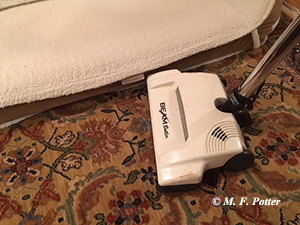
Fig. 5: Vacuuming is an important step when treating the premises for fleas.
Insecticide Application – Always read and follow instructions on the container. Many different products are available for home flea treatment. The most effective ones contain ingredients such as permethrin, imidacloprid, or dinotefuran that are lethal to the biting adult stage, and an “insect growth regulator” (e.g., methoprene, pyriproxyfen) that halts development of flea eggs and larvae. Householders will need to consult the “active ingredients” panel on the product label to determine if these are present. Popular consumer brands containing such ingredients include Raid Flea Killer Plus® and Ortho® Home Defense. Professional versions sold online include Precor 2000® Plus Premise Spray, PT Alpine® Flea Insecticide, PT Ultracide® Flea Insecticide, and Nyguard® Plus Flea and Tick Premise Spray. Most householders will find aerosols more convenient to use than liquids. Carpets and other surfaces treated with aerosols also tend to dry more quickly.
Application should be thorough and include all likely areas of flea development. Carpets, throw rugs, under and behind beds and furniture, and beneath sofa cushions on which pets sleep should all be treated. Pay particular attention to where pets spend much of their time since this is where most of the eggs, larvae and pupae will be concentrated. For example, if the family cat sleeps on a chair or hides under a bed, these areas should be treated as well. Hardwood, tile and concrete floors generally do not need to be treated, but should be vacuumed. People and pets should remain off treated surfaces until the spray has dried. This may take a few hours depending on carpet type, ventilation, and method of application (aerosols tending to dry faster than liquids).
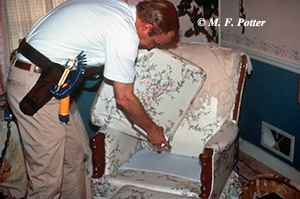
Fig. 6: When treating the premises, pay particular attention to areas where pets sleep and spend time.
Even after treatment, expect to see some fleas for a few weeks or longer. These are often newly emerged adults, which have not yet succumbed to the insecticide. Instead of retreating immediately, continue to vacuum. As mentioned earlier, vacuuming stimulates insecticide-resistant flea pupae/cocoons to hatch, bringing emerging adults into contact with the treatment sooner. If adult fleas continue to be seen beyond 4 weeks, retreatment of the premises and/or pets may be necessary. Homeowners not wanting to treat premises themselves can enlist the services of a professional pest control firm.
A form of treatment NOT recommended for fleas involves using total-release insect foggers, sometimes referred to as “bug bombs”. While insecticide foggers require little effort to use, they are seldom effective against fleas or other household pests. This is partly because the ingredients are released upwards into the air and often do not reach into hidden areas of flea development. Besides their lack of effectiveness, the ingredients in total-release insect foggers may be flammable when dispensed near open flame. (For more on these non-recommended products, see University of Kentucky Entomology Entfact-643, Limitations of Home Insect Foggers.)
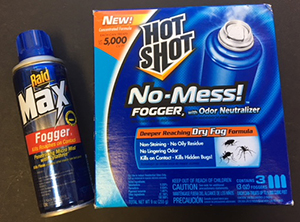
Fig. 7: Insecticide foggers (“bug bombs”) are not recommended for controlling fleas.
Flea Traps - Flea traps utilizing a light and a glue board can be useful in capturing adult fleas and monitoring the status of treatment. The traps will not eliminate an infestation unless used in combination with other methods. One of the most effective flea traps on the market uses an alternating on-off (green) light to simulate the shadow of a passing animal. Research has shown that fleas respond to green light more than other wavelengths. The device, myFleaTrap®, can be purchased online.
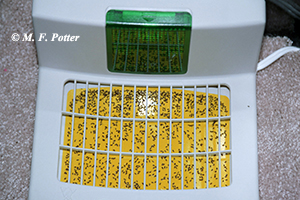
Fig. 8: Traps with an intermittent green light are very attractive to adult fleas emerging in homes.
Treatment of Yard
Most flea problems can be eliminated by treating the pet and if needed the interior of the home. If pets spend most of their time outdoors, it may also be useful to treat the yard. One way to assess if the yard (or other areas) is flea-infested is to walk the property wearing white athletic socks, pulled high on the leg. If adult fleas are present, they will be seen against the white background of the socks.
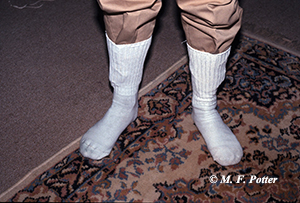
Fig. 9: White socks can help reveal if adult fleas are present in an area.
Similar to indoor treatments, outdoor treatments should focus on areas where pets rest, sleep, and run, e.g., doghouse and kennel areas, along fences, under decks, and next to the foundation. It is seldom necessary to treat the entire yard, or areas exposed to full sun since these areas are less preferred for flea development. Insecticide formulations containing an insect growth-regulating ingredient such as pyriproxyfen (Archer® Insect Growth Regulator, NyGuard® IGR Concentrate) prevent hatching/development of flea eggs and larvae for several months. Diluted in water, the insecticides can be applied with a hose-end or pump-up sprayer. Such treatments can also help prevent/suppress fleas in commercial kennels and animal shelters.
Fleas in the Absence of Pets
As mentioned earlier, animals other than pets can harbor fleas. When fleas are infesting a home and no pets are present, raccoons, opossums, skunks or squirrels often are the culprit. A family of raccoons or opossums in the attic or chimney, or a skunk or feral cat living beneath a home can be a cryptic source of fleas entering the living spaces. In such cases, the feral animals should be removed by a nuisance wildlife or pest control professional and the home treated in the manner above.
Always read and follow label directions and the advice of your veterinarian. Where trade names are used, no endorsement is intended, nor criticism implied of similar products not named.
Revised: 6/18
CAUTION: Some pesticides mentioned in this publication may not be legal in your area of the country. If in doubt, please consult your local cooperative extension service or regulatory agency. Furthermore, ALWAYS READ AND FOLLOW LABEL DIRECTIONS FOR THE PRODUCT YOU ARE USING.
Images copyright University of Kentucky unless otherwise attributed.
